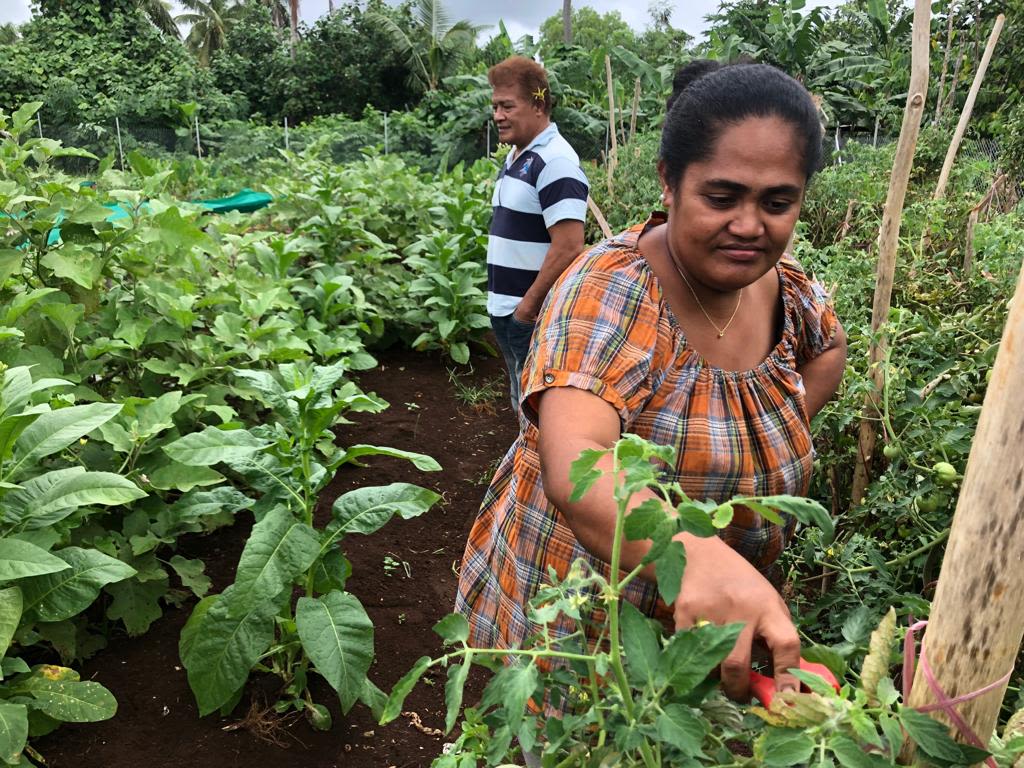The Pacific holds a unique position in the global food system. Between 50% and 70% of the region’s inhabitants depend on agriculture and fishing to meet their needs. Half of the global tuna catch comes from the region’s fisheries, which are managed sustainably. The Pacific also boasts a rich agricultural biodiversity, with countries in the region establishing unique value chains that feed markets and the international supply, especially in high-value products. The sustainable management of these food systems significantly contributes to the smooth functioning of the global food supply chain.
However, facing unique challenges, Pacific countries struggle to reap their share of the benefits from the global food system, which has consequences for the health and livelihoods of populations, as well as the economic development of the region. The Pacific is grappling with the triple burden of malnutrition, and non-communicable diseases (NCDs) and associated risk factors are the leading causes of premature death in most Pacific island states and territories. Climate change poses a fundamental threat to the Pacific’s food systems. Urgent action is required on both global and local scales to manage the effects of climate change and the risks threatening the most vulnerable, ensuring that no one is left behind.
The Pacific Community (SPC) works to promote food security and the health of the food systems of Pacific island states and territories through technical, scientific, and development activities.
Pacific Food Production: Climate Change Challenges
Climate change presents major challenges for food production in the Pacific. Both land and sea are affected, particularly key sectors such as staple crops, fishing, and aquaculture, which are essential to the region. Here are some key points to consider:
- Fishing and Aquaculture: Climate change leads to rising ocean temperatures and changes in currents, which cause shifts in fish stocks, potentially affecting the fishing sector. Rising sea temperatures also put stress on aquatic species such as oysters, which impacts their growth and health. This phenomenon also directly affects aquaculture due to its detrimental impact on species sensitive to temperature changes.
- Staple Crops: Climate change can bring extreme weather events, which are especially damaging to staple crops such as bananas, sweet potatoes, yams, cassava, coconut trees, giant taro, and water taro. These crops are vulnerable to heavy rainfall, which can cause soil flooding, particularly in areas already subjected to high rainfall levels.
- Livestock: Rising temperatures make it difficult for poultry farmers to maintain optimal living conditions for their birds, which can have a widespread impact on the poultry industry in the region.
In summary, climate change is putting additional pressure on Pacific food systems due to its harmful effects on staple crops, livestock, and fishing. It is crucial to find ways to adapt to these changes and ensure the region’s food security.
New Caledonia, French Polynesia, and Wallis and Futuna Committed to Sustainable and Resilient Food Systems
The PROTEGE project supports the authorities of New Caledonia, French Polynesia, and Wallis and Futuna in developing strategic and operational plans to strengthen the sustainability and resilience of their food systems so that these systems can both enhance and preserve the natural resources of the territories.
In French Polynesia, food consumption is also limited by cost, with 53% of Polynesians unable to afford a healthy diet, a figure that drops to 24% when accounting for self-consumption (Source: Presidency of French Polynesia, 2023). Consequently, actions to enhance biomass utilization to improve soil fertility and produce local animal feed (BSF fly larvae) have been implemented with the support of the PROTEGE project, opening new opportunities to reduce dependence on external inputs for plant and animal production.
For more information, check out this video.
In Wallis and Futuna, healthy eating has become a health priority and is being taught from an early age. At the Vaimoana Agricultural High School, students plant and harvest vegetables and herbs to learn how to choose a diet that best suits their Polynesian genetic heritage.
Discover this video made by the Direction of the Agriculture, Forestry, and Fisheries Service (DSA) of Wallis and Futuna, funded under the PROTEGE project by the European Union.
Passing Down Agricultural Traditions to Protect Food Systems in Tonga
The Pacific is a vast region made up of small, highly diverse countries. The first step is to bring them together to collaborate on solving the issues related to the region’s food systems. SPC and its partners organized a series of consultations across the region, combining tradition and innovation to generate innovative solutions for more resilient food systems.
In Tonga, a local organization is implementing organic farming projects to allow young people to learn from the elders how to generate income while protecting the country’s food systems. Watch below (or click here).
Pacific Food Systems
The region continues to face a « convergence of crises »—post-COVID-19 recovery efforts, climate change and natural disasters, non-communicable diseases (NCDs), and the high cost of food. SPC brings together various sectors and stakeholders to stimulate action through interdisciplinary approaches. To address challenges related to food security and nutrition, strong collaboration is needed within SPC and member countries to design and adopt new food systems strategies that can nourish an expanding Oceanian region.
According to Alisi Tuqa, Food Systems Program Manager at SPC, “Food systems strategies must be linked to existing national plans that address various elements of the system and directly draw from them. SPC specifically adopts this approach in its support activities with its member countries under programs related to health, statistics, fishing, aquaculture, and forestry, as well as through the Pacific Centre for Pacific Crops and Trees (CePaCT), with the aim of ensuring the health and resilience of the Pacific.”
Source: reliefweb



